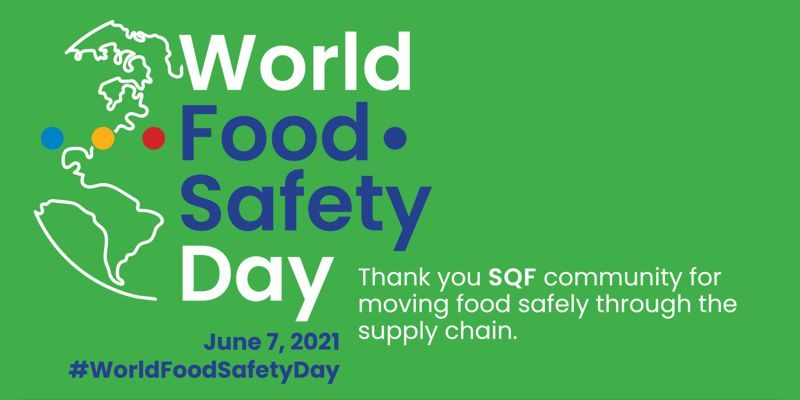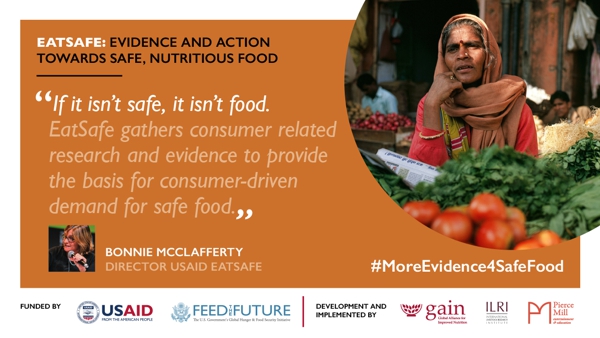Without food safety, there is no food security

EatSafe research: pandemic safety measures widely adopted in traditional food markets in Bangladesh, Kenya, Nigeria
Washington DC, 7 June 2021 – Experts came together today, World Food Safety Day 2021, to discuss the big questions around the provision of safe and nutritious food in traditional markets in developing countries. The key conclusions they reached are that not enough is being done to understand the issues around food safety, and that consumer demand is integral to driving food safety advances.
The consequences are clear. In 2015, the WHO reported that over 400,000 people died annually from foodborne diseases. In 2018, the World Bank estimated that food safety costs $110bn a year in lost productivity through illness and health costs, with sub-Sahara Africa affected the most. But more reliable and current data is required to understand consumer values and perceptions as well as the impact of poor food safety.

The Interview Cruncher was hosted by EatSafe, the five-year research and learning program sponsored by USAID and led by the Global Alliance for Improved Nutrition (GAIN). It was moderated by Bonnie McClafferty, Director, Food Safety and EatSafe at GAIN.
The panel was made up of Mohamed Nasser, Regional Advisor Food Safety and Quality Assurance, World Food Programme, Dakar/Senegal; Prof. Olugbenga Ben Ogunmoyela, Executive Director, Consumer Advocacy for Food Safety and Nutrition Initiative (CAFSANI); and Priya Prakash, Founder & CEO of HealthSetGo and Youth Champion for Act4Food Act4Change.
Bonnie McClafferty, Director, EatSafe, said, “The human and financial costs of poor food safety are appalling yet it is being widely ignored. That has to change and we need to take action now to achieve better health outcomes for the 600 million people who each year get sick from unsafe food.”
“We need to build a solid understanding of consumer values and perceptions so we can learn how we can foster a vendor- and consumer-led change. In parallel, we need to implement food safety governance and surveillance where often there is none at all while developing the capacity and infrastructure for change.”
“We know the pandemic has promoted new food hygiene practices that can have a positive impact on food safety in traditional markets. EatSafe’s research shows that there is a lot more to do. We’re calling on governments and donor groups to provide resources and further research so that evidence-based decisions about food safety measures can be taken to strengthen traditional markets, to ensure safer foods.”
Mohamed Nasser said, “Without food safety, there is no food security. The basics already started during the pandemic should be continued, like hand hygiene and cleanliness.”
Prof. Olugbenga Ben Ogunmoyela said, “We need to rebuild traditional markets and make sure policies embrace them, by upgrading facilities. And consumers must be given a voice in shaping the markets.”
Priya Prakash said, “We have to empower traditional markets to use technology to connect with consumers. It is becoming the preferred mode of commerce for the youth. Street vendors beginning to accept digital payments is a great first step in that direction.”

Traditional food market vendors apply COVID-19 measures
In parallel to EatSafe’s core mission of engaging consumers to demand food safety, the program recently expanded efforts to include gathering key data from traditional markets to understand how they have been impacted by COVID-19 through GAIN’s Keeping Food Markets Working program. EatSafe is interested in what is needed to ensure the availability of affordable, safe, nutritious food during the COVID-19 pandemic. Data was collected from traditional food markets in Nigeria, Kenya, Tanzania, Ethiopia and Bangladesh bi-weekly during the last quarter 2020. Interviews and focus groups are continuing throughout 2021 to learn how consumer behaviour has changed and how resilient the traditional market supply chains are.
The most reported business challenges in the traditional markets were decreased sales and significantly fewer customers, suggesting that movement restrictions and consumer risk avoidance were a major source of difficulty.
Commenting on the needs, Bonnie McClafferty said: “We can build on the fact that safety measures are now a reality in people’s lives. With better surveillance and education regarding food safety measures, consumers getting their foods from traditional markets can help create an enabling environment to start closing the system’s gaps and upgrading markets to support the safety of foods.”
-ends-
Source: westerngrocer.com

